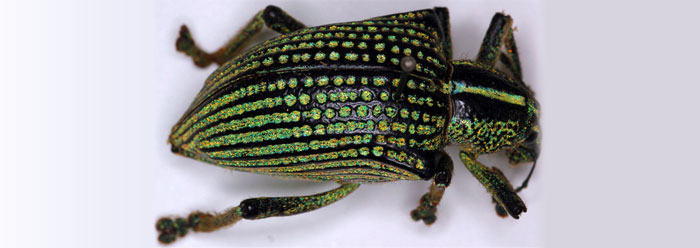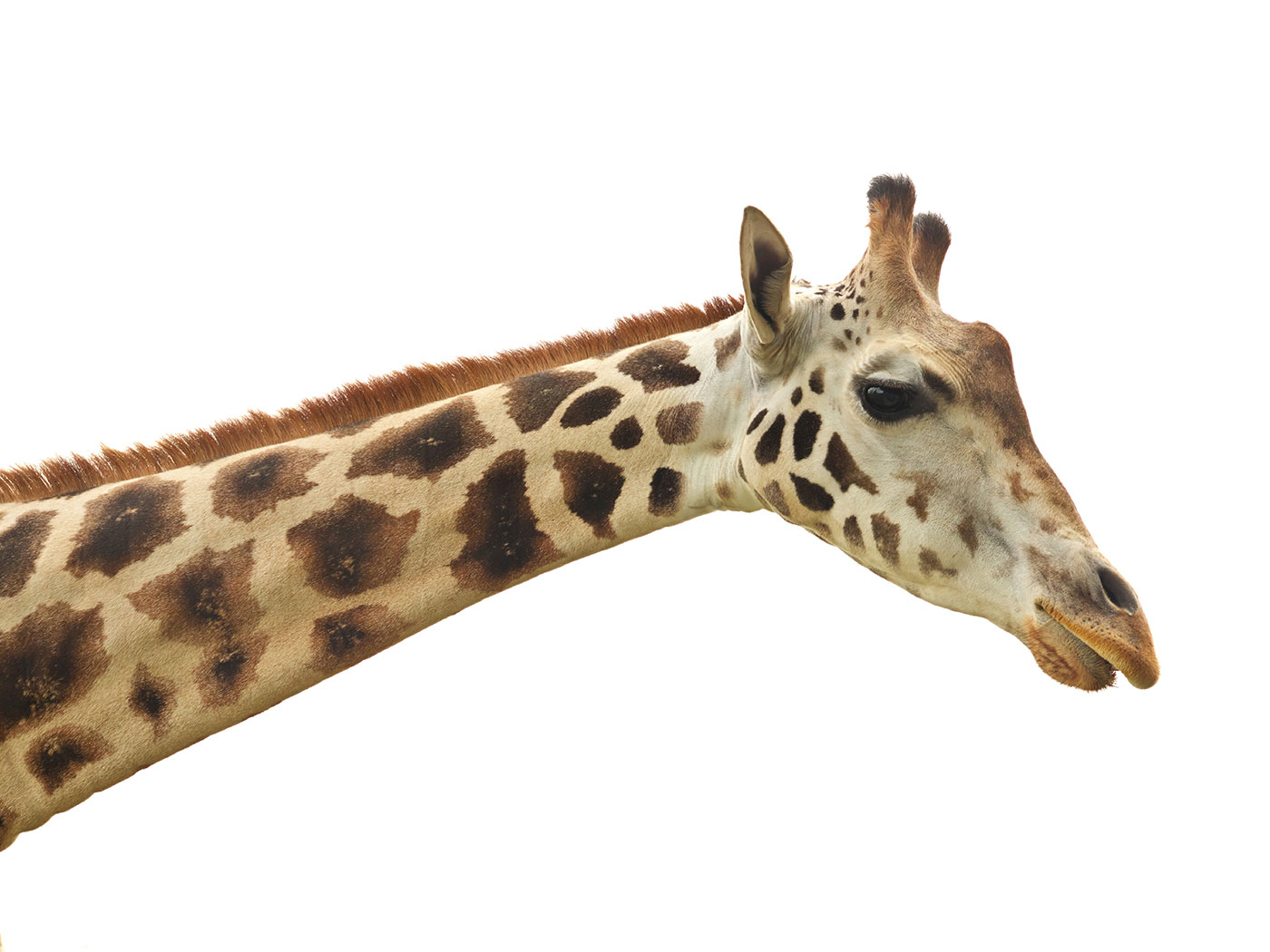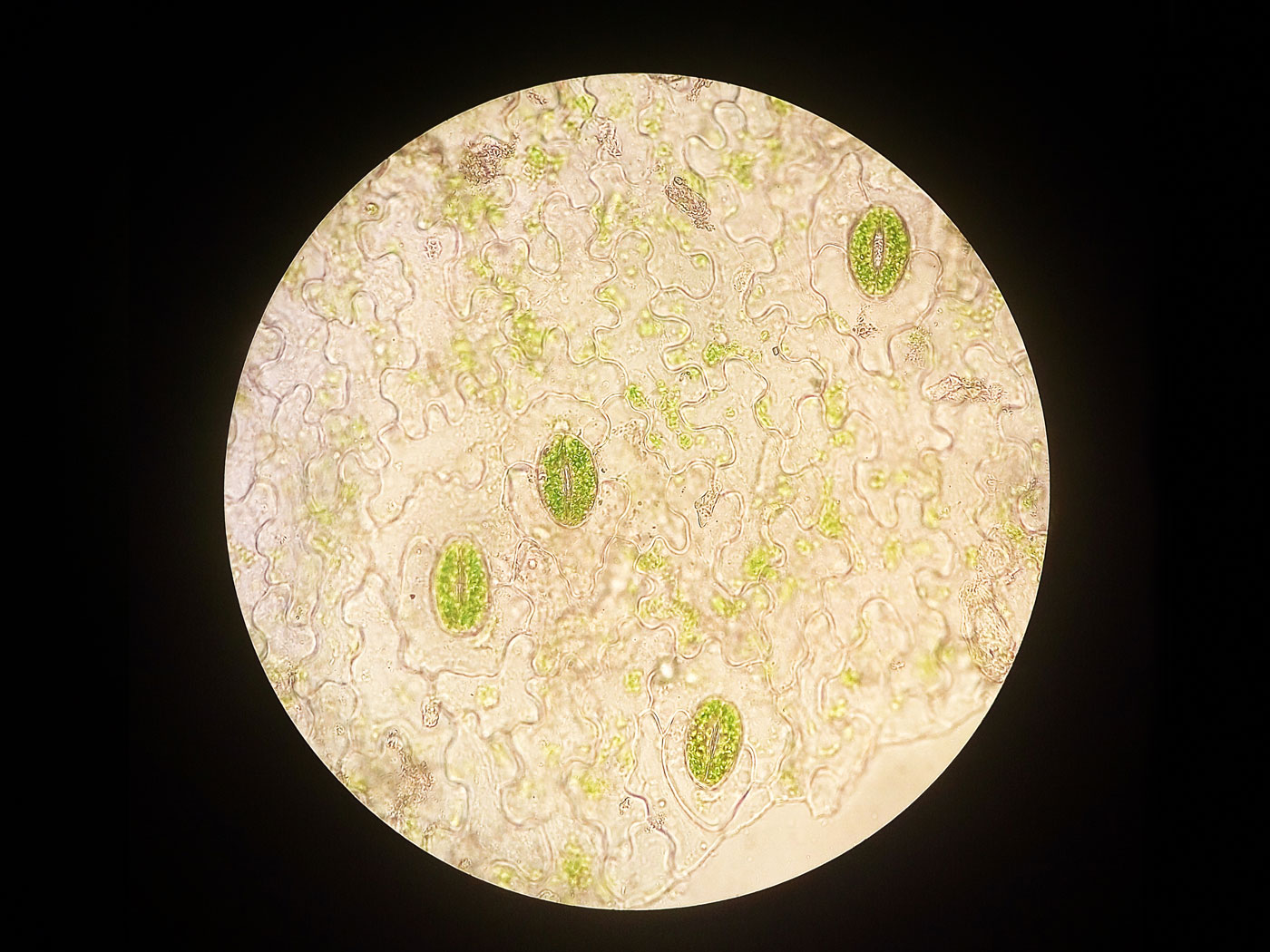The diamond weevil, which makes its home in the Brazilian tropics, has a body studded with tiny, brilliant reflectors. Each one is like a diamond, reflecting different-colored light in shiny arrays. New research has probed the microstructure of these brilliant facets and discovered that the way they work is familiar—but the way they are made is not.
These insect "diamonds" are not made of carbon like the diamonds in a jewelry store, but instead contain the same sugar-based molecules called chitin that comprise the rest of their outer cuticle. But the 3-dimensional arrangement of the sugar molecules is precise and orderly. In their report published in the Journal of the Royal Society Interface, the researchers called them "biological photonic crystals that act as wavelength-specific reflectors."1
The investigators shone a tiny, focused beam of light on each of the weevil's crystals to peer into its molecular arrangement. It resembled the pentagon and hexagon panels of a soccer ball, but the insects' gem surfaces form hexagon and square "panels" like those of diamond facets.
The study authors compared the crystalline shape to other theoretically possible shapes and deduced that the weevil crystals have the best possible shape to reflect the maximum amount of light. They wrote, "Extremely large biophotonic nanostructures of E. imperialis [diamond weevil] are structurally optimized for high reflectance."1
Lead author Bodo Wilts told Wired Science, "We've got some catching up to do.….The nature-produced tiny structures are far beyond any human designs."2
This finding mirrors a similarly cunning reflectance structure among certain butterflies that was described in a 2010 study. In their report in Proceedings of the National Academy of Sciences, researchers detailed their discovery in five butterfly species of "gyroid nanostructure" that refracts green light.3
The butterfly researchers wrote, "These butterflies have evolved to use biological and physical mechanisms that anticipate contemporary approaches to the engineering and manufacture of photonic materials."3
The crystal-construction techniques employed by both butterflies and weevils so far exceed the current technological capacities of mankind that engineers are going to try using these insects' organizational tactics as a template to produce new photonic materials.
In both cases, the study authors credited nature or evolution with the origin of these fine structures. But if insect technology is beyond the capability of intelligent people, then shouldn't it rather be attributed to a source with even greater intelligence than man? Nature has no intelligence and no intelligence proxy, leaving a divine Creator as the only possible cause.4 And He rightly deserves the credit for these brilliant biological structures.
References
- Wilts, B. D. et al. Hemispherical Brillouin zone imaging of a diamond-type biological photonic crystal. Journal of the Royal Society Interface. Published online before print December 21, 2011.
- Mosher, D. Diamond Weevil's Rainbow Bling Really Is Diamond. Wired Science. Posted on wired.com December 21, 2011, accessed December 23, 2011.
- Saranathan, V. et al. 2010. Structure, function, and self-assembly of single network gyroid (I4132) photonic crystals in butterfly wing scales. Proceedings of the National Academy of Sciences. 107 (26): 11676-11681.
- Guliuzza, R. 2010. Natural Selection Is Not "Nature's Intelligence." Acts & Facts. 39 (5): 10-11.
Image credit: Bodo Wilts/Copyright © 2012 The Royal Society. Adapted for use in accordance with federal copyright (fair use doctrine) law. Usage by ICR does not imply endorsement of copyright holders.
* Mr. Thomas is Science Writer at the Institute for Creation Research.
Article posted on January 6, 2012.






















